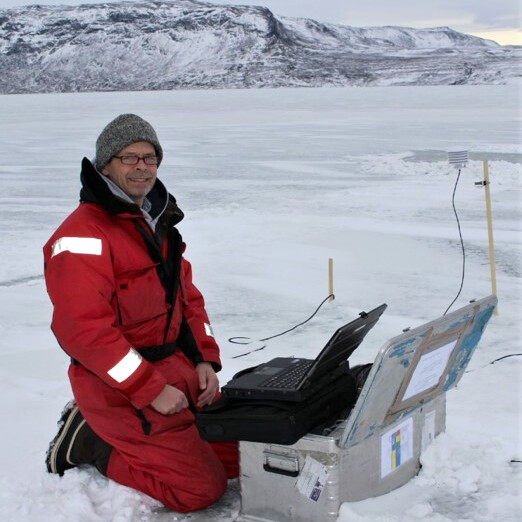Photobiological Effects on Ice Algae of a Rapid Whole-Fjord Loss of Snow Cover during Spring Growth in Kangerlussuaq, a West Greenland Fjord
[Published 27 July 2021]
Scientific Publications
Abstract
Snow cover on sea ice is the most important factor controlling light availability for sea ice algae, but it is predicted by climate models to become more variable and stochastic. Here, we document effects of a sudden, complete loss of the entire snow cover on first-year sea ice at Kangerlussuaq Fjord, West Greenland, due to a natural Föhn wind event that caused a ca. 17 °C air temperature increase over 36 h. We applied Imaging-PAM fluorometry to examine effects of snow cover on algal distribution and photobiology and observed a rapid decrease in algal biomass associated with loss of the skeletal ice crystal layer on the underside of the ice that had supported most of the visible algae. Furthermore, the remaining algae were photobiologically stressed, as seen in a significant decrease in the dark-acclimated fluorescence yield (ΦPSII_max) from 0.55 before snow loss to 0.41 after. However, recovery in the dark suggested that non-photosynthetic quenching was successfully dissipating excess energy in the community and that there was little photodamage. An observed decrease in the photosynthetic efficiency α from 0.22 to 0.16 µmol é m−2 s−1 is therefore likely to be due to photoacclimation and the change in community composition. Centric diatoms and flagellates were the main taxa lost in the snow loss event, whereas the sea ice specialist Nitzschia frigida increased in numbers. These observations are similar to those seen in artificial snow-clearing experiments and consistent with snow clearing being a useful approach for investigating the complex interactions between snow cover, irradiance fluctuations, and ice algal performance.
FACE-IT Scientists:
Lars Chresten LUND-HANSEN
Arctic Research Centre, Aquatic Biology, Department of Biology, Denmark
Lars’ FACE-IT Projects
Role in FACE-IT:
• Leader "Ecosystem Function Changes"

